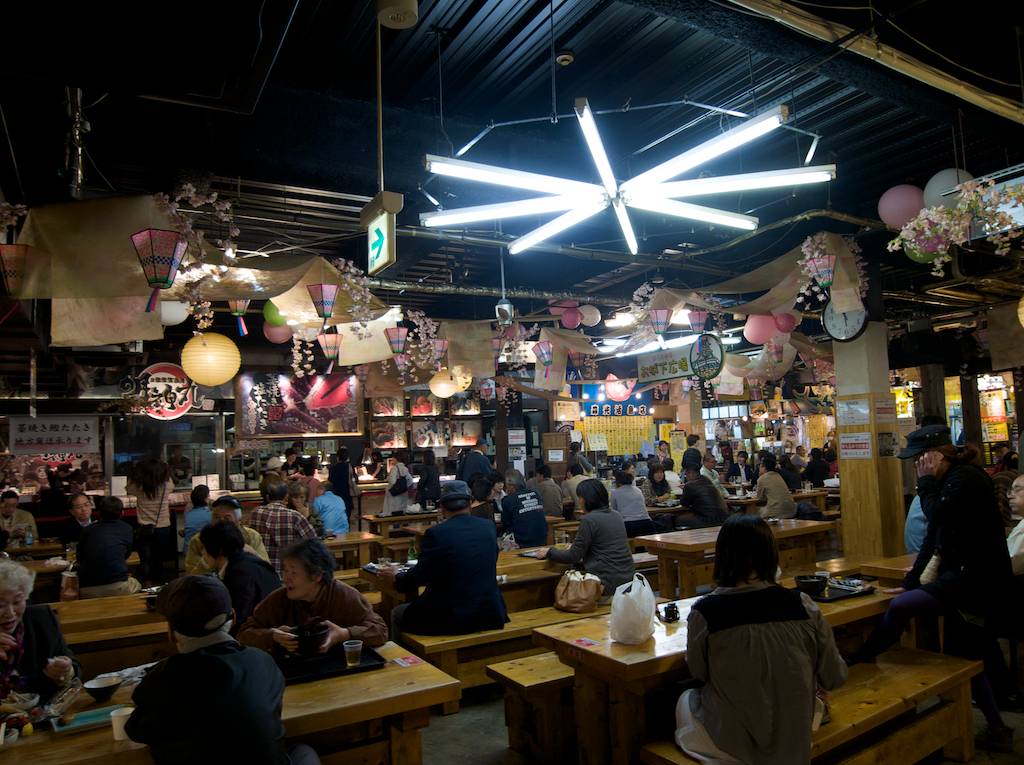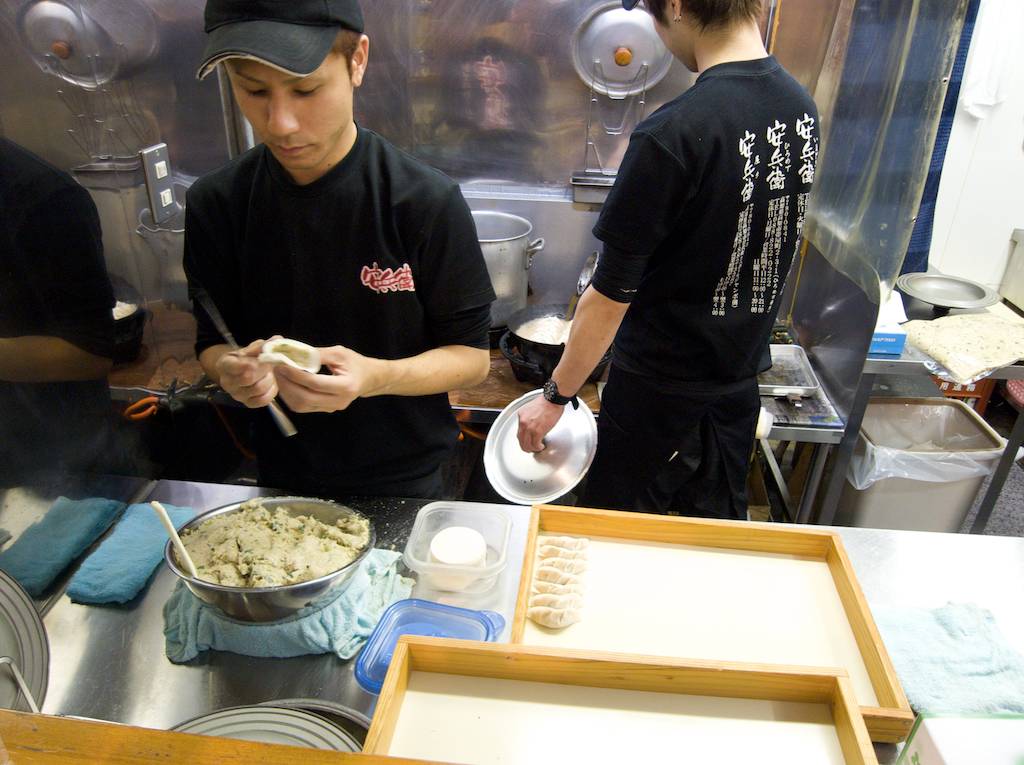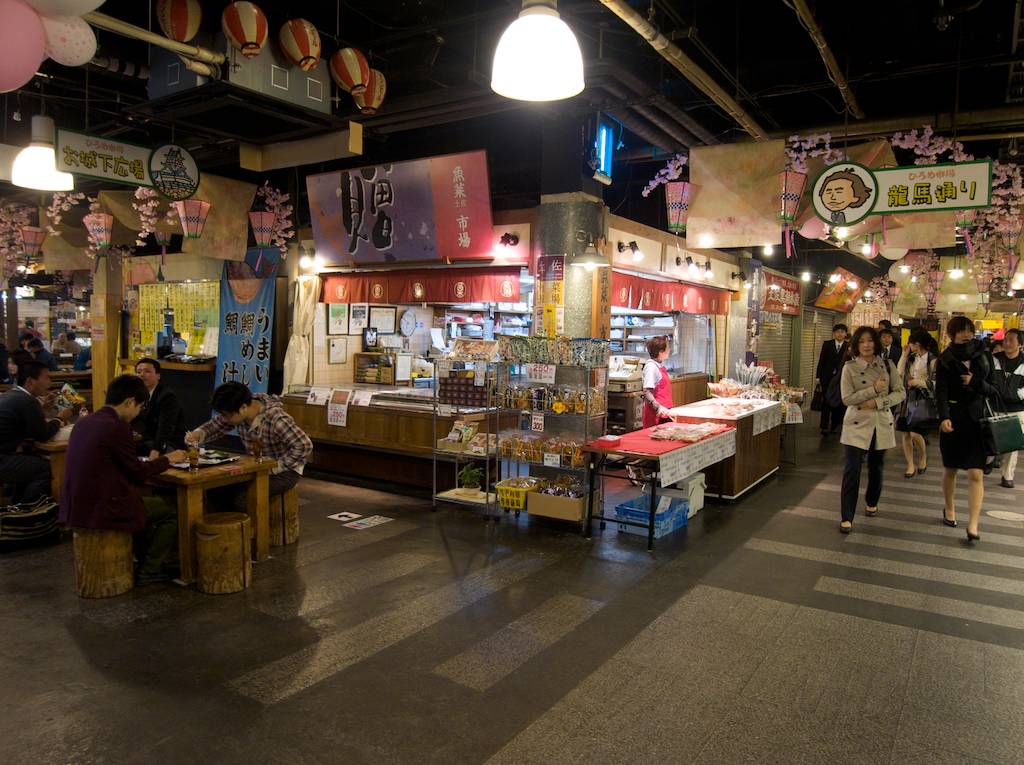Hirome Market in Kochi Japan
Hungry in Kochi, Japan? Hirome Market sits quietly inside a rehabilitated building a couple of blocks east of Kochi Castle.
by Bob Kerstetter
Hunger closes in with the passing of daylight.
You leave Wakayama City on the Kii peninsula about 10 hours earlier after—finally—succeeding with your research into an obscure Shinto shrine near Wakaura Bay.
Traveling by local express train, you arrive in Osaka City, catch the Shinkansen to Okayama City and hop another local express to Kochi City on the island of Shikoku. The Japan Rail Pass for visitors works well with your budget when trekking Japan. Travel time totals slightly more than five hours.

You take trains, left to right, from Wakayama City to Osaka City to Okayama City to Kochi City.
You goof around too much exploring near Kochi station, finding your room, hanging out at Harimaya Bridge and looking at the castle gate. Hunger grabs you about the time restaurants begin to close.
Accepting the recommendation of a local, you prowl the streets toward Hirome Market. It supposedly sits a few blocks east of the castle.
The sign outside reads ひろめ市場. Because of the weather you pass through a slotted, heavy plastic curtain. It separates indoor market from outdoor chill.
As westerners tend to seek cherry blossoms this time of year—the sakura moved north from here at least seven days ago—you count as the lone occidentals.

Hirome Market seats about 500 at long tables. You pick a seat, mark it with some items such as your jacket, then go get food.
Hirome Market smells like the Japanese cuisine you love. It packs 60 food and merchandise stalls into a what probably measures a square city block. Cooks and heaters keep the space toasty warm. It seats about 500 people. A few faces smile at you from benches and stump stools at long wooden tables. Others shyly stare at their plates, hoping you speak English to someone else. Many Japanese are very shy. After studying the scene for a minute or two you understand the market kata.
You find open seats at a table, leaving something to mark your place. A jacket works fine. No one steals here, relieving you of jacket guard duty. You wander off to find food.
Gyoza and rice look pretty good. Gyoza wontons wrap veggies and meat into filled crescents. The chef forms yours as you watch, dropping them into a fryer. You pick up rice from a second vendor and return to your table. You choose water as a beverage.

A chef prepares gyoza, shaping veggies and meat into crescents. They taste great.
The people next to you ask about your origins. "We are Americans," you reply—that is Watashi-wa Amerika-jin desu, in Japanese.
In most parts of Japan you silence the u at the end of desu. That appears to work here. In kana—the phonetic writing system of Japan enfolding both harigana and katakana—you say, わたしはアメリカひとです, or something similar.
Your neighbors become excited upon learning you live in Texas. "Do you like Yu Darvish?" "Yes. He pitches for our team." Someone older than 60—an age of remembrance—mentions the assassination of John F. Kennedy in Dallas. While this news happened decades back, the political murder still interests those who remember in civilized Japan. Soon a young woman delivers your gyoza.
It smells wonderful. A few people nearby casually watch to see how you handle chopsticks. While you hardly view yourself as expert, your friend in Tokyo says you eat beautifully, like a native. You pass the chopsticks test.

Hirome Market contains more than 60 vendors selling food and clothing. Some customers sit on stump stools.
Close to exhausting your Japanese vocabulary, you thank your neighbors very politely and eat. A third of the people smoke with their meal. Almost everyone enjoys beer.
Relaxed, you settle in for the evening. You order more gyoza.
Near closing time you leave your plates, cups and chopsticks on the table, rather than bus these things yourself. Somehow the workers know where to return each item.
You bow to your new friends, say "see you later" and step into the cool air—a filling introduction to Kochi City.